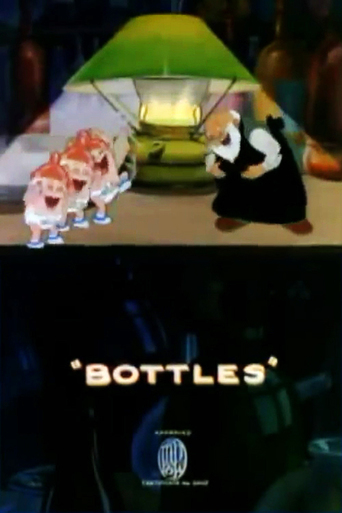

Very well executed
... View MoreThis Movie Can Only Be Described With One Word.
... View MoreI gave it a 7.5 out of 10
... View Moredisgusting, overrated, pointless
... View MoreIt seems that one major theology of animation concerns the animating (meaning coming to life) of normally inanimate objects. Its one strain worth tracing, because with today's film technologies, animals can easily be seen to talk and even wear clothes and such. Its the power to make objects and environments have agency that gives great animation its power. And if you trace the evolution of the idea, you'll come through this. Its an unimaginative idea: a chemist/druggist mixes a poison, then dreams that it comes alive and evilly threatens him, together with all the other objects in the lab.As with all early attempts with object life, some of the objects must be juvenile, and the centerpiece here are three baby bottle who whine because their diapers are dirty.This was made toward the end of prohibition when use of opiates and marijuana became its great rise in popularity in the US, and that's the not so subtle subtext here.Unfortunately the animation itself isn't any great advance.Ted's Evaluation -- 2 of 3: Has some interesting elements.
... View MoreAgree with previous poster, this cartoon is fantastic on so many levels.I find it very warming, a treat for the eyes and ears, the only shame is it's over so soon.Remember watching this over 30 years ago when I was a kid, that skeleton-bottle, it scared the life out of me but I loved those singing baby-bottles. Watching it again is a real trip.I also agree, it's long time overdue for a DVD release of these gems. Those geniuses who created these deserve no less.Brilliant.
... View MoreI saw this when I was about 10 years old, but it has only seemed to be available on laser disc up until its recent release as one of the extras on the DVD release of 'San Francisco'. It's exactly as surreal and fun as I remember! With the 'death walks tonight!' croaks of the animated poison bottle, it seems to convey a sense of foreboding, as if people at the time could sense the war that was coming only three years later. Some fantastic ideas, like the Spirits Of Ammonia, the Baby Bottles and the Cuban rum bottles. Some nice rotoscoping as well, in the Cuban sequence. They really did make them better back then. Contrast this or Max Fleischer's Superman series with the half-hour toy ads like He-Man that were cranked out in the 80's. My 3-year old gets to watch as many of these, and Betty Boop and old Popeye as he likes, so that he knows the good stuff!
... View More1936 was the year Harman and Ising began to create good cartoons, but they remained wedded to a sentimental childishness that stopped them from achieving great cartoons. Ising would eventually overcome that, but Harman never quite did. Here, the problem is that we know the main character is sleeping, so his dreaming peril is not as frightening as it might be.The best thing about their cartoons from this period is their lush use of Technicolor. While this is not so over the top as TO SPRING, it shows some excellent visual glosses.The middle of this cartoon is a common one for Harman-Ising and for Schlesinger in this period: the contents of a bookstore, row of billboards or, in this case, the various brands in a drugstore. Some of them are still current. Enjoy spotting the ones you know.
... View More